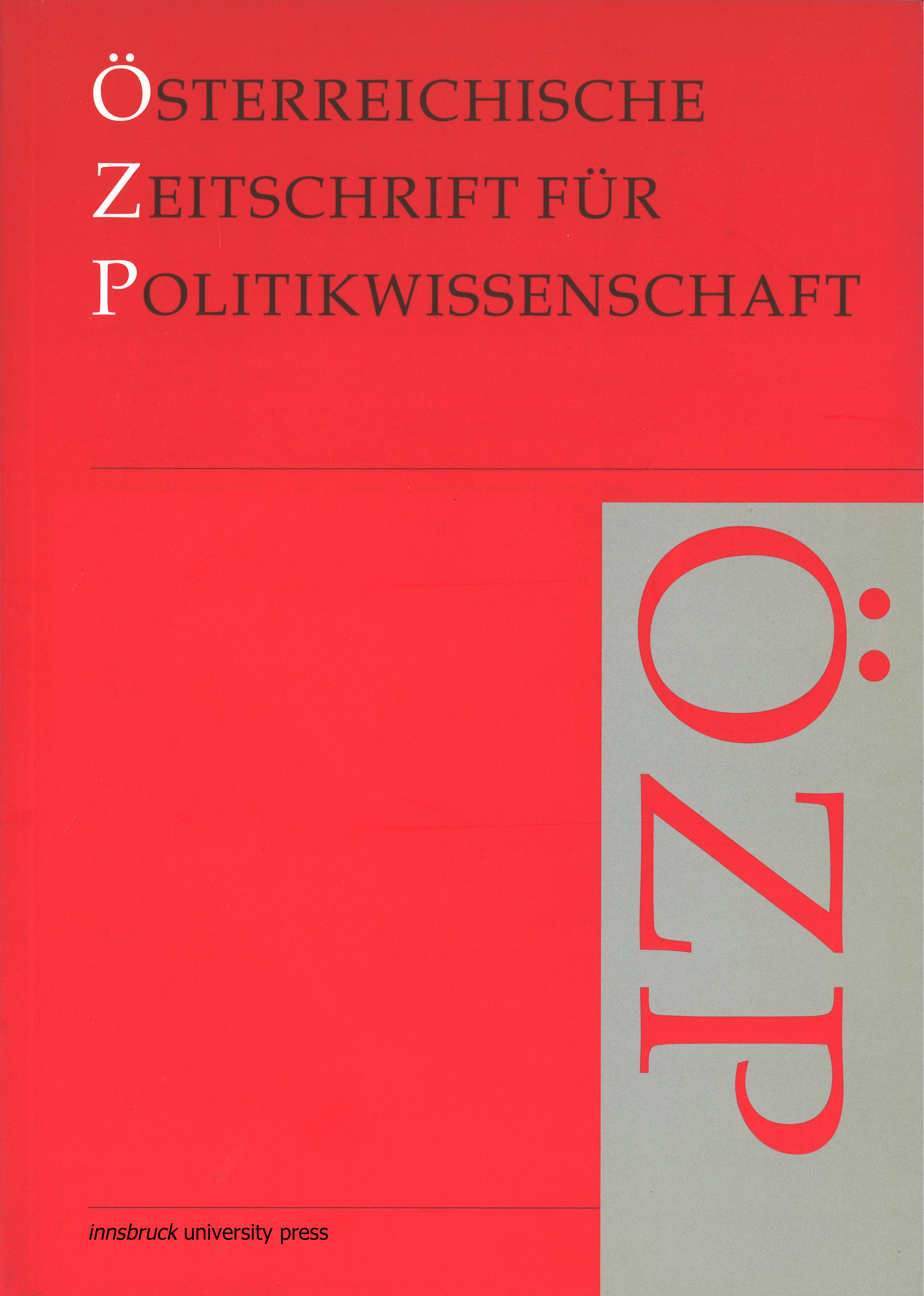Annähern oder Distanzieren? Strategische Positionierung von FDP, VdU und FPÖ zwischen 1949 und 2002
DOI:
https://doi.org/10.15203/ozp.883.vol34iss4Keywords:
Koalitionstheorien, Verhandlungstheorien, innerparteilicher Konflikt, Liberale Parteien, WahlprogrammanalyseAbstract
Seit 1949 verfügen Deutschland und Österreich über ideologisch wie numerisch ähnliche Parteiensysteme. Während jedoch in der Bundesrepublik Koalitionen aus großer und kleiner Partei die Regel waren, bestanden in Österreich vorwiegend große Koalitionen. Ziel dieses Aufsatzes soll sein, durch eine Kombination von koalitions- und spieltheoretischen sowie historischen Ansätzen die Ursachen für die unterschiedliche Strategie und Stellung von FDP, VdU und FPÖ im jeweiligen Koalitionsspiel zu bestimmen. Die empirische Analyse von Wahlprogrammen zeigt, dass die FDP häufig programmatische Positionen einnimmt, die der ihres gewünschten Koalitionspartners widersprechen, wohingegen VdU bzw. FPÖ sich inhaltlich vielfach der Partei annähern, die Signale zur Bildung einer „kleinen Koalition“ aussendet. Das Eintreten dieser strategischen Bewegungen hängt jedoch davon ab, welcher ideologische Flügel zum Zeitpunkt einer Wahl die jeweilige Partei dominiert.Downloads
Issue
Section
License
The OZP is the authorized quarterly publication of the Österreichische Gesellschaft für Politikwissenschaft (ÖGPW, Austrian Political Science Association)
The author of an article (in case of multiple authors: the corresponding author, responsible for releasing this material on behalf of any and all co-authors) accepted to be published in the OZP hereby acknowledges the following Copyright Notice:
- The author retains the copyright to the article.
- It is the responsibility of the author, not of the OZP, to obtain permission to use any previously published and/or copyrighted material.
- Publication of a submitted text is dependent on positive results from the peer reviewing. In such a case, the OZP editors have the right to publish the text.
- In case of publication, the article will be assigned a DOI (digital object identifier) number.
- The author agrees to abide by an open access Creative Commons Attribution (CC BY nc) license. The license permits any user to download, print out, extract, reuse, archive, and distribute the article in any non-commercial way, so long as appropriate credit is given to the author and source of the work.
- The license ensures that the author’s article will be available as widely as possible and that the article can be included in any scientific archive. In order to facilitate distribution, the author agrees that the article, once published, will be submitted to various abstracting, indexing and archiving services as selected by the OZP.
- In addition, the author is encouraged to self-archive the article, once published, with reference to the place of the first publication.
- After the contribution appears in the OZP, it is still possible to publish it elsewhere with reference to the place of the first publication.
- The finished article, if published, will include a correspondence address (both postal and email) of the author.
- If written under the auspices of a grant from one or more funding agencies, such as FWF (Austrian Science Fund), ERC (European Research Council), and Horizon 2020 (EU Framework Programme), an article accepted for publication has to be deposited in an Open Access archive. The OZP’s archiving policy is compliant with these provisions. (In case the article derives on funding from a different source, the author is responsible to check compliance of provisions.)




